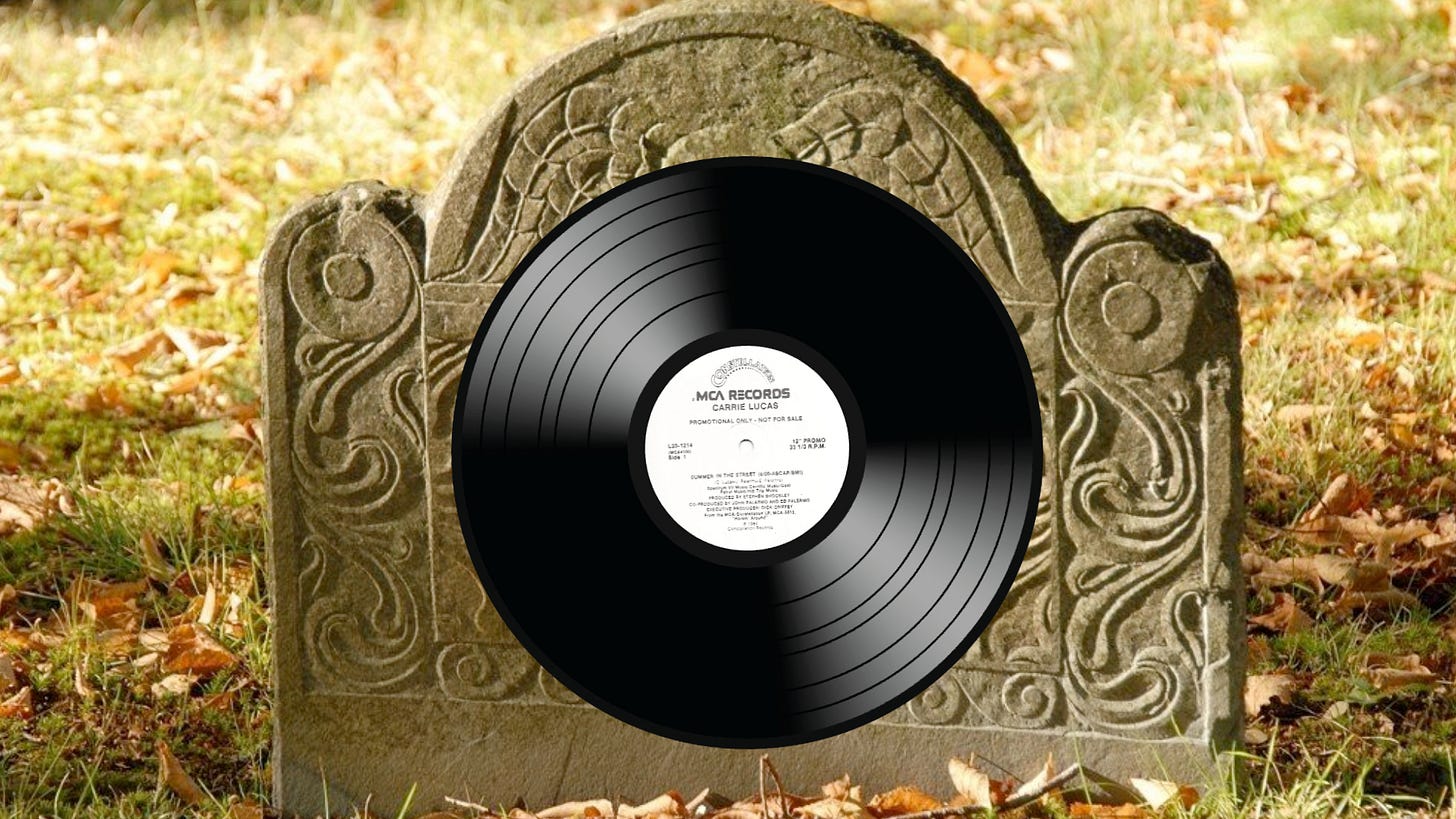Yes yes yes, I know it’s a silly headline, but hear me out.
In a commercial sense, vinyl is as strong as it has been for 30-odd years, but a story dropped this week that (almost) shook that up.
Billboard reported that vinyl sales in the US dropped 33.3% between 2023 and 2024.
I thought it was suspicious at the time. 33.3%? Drop? For vinyl sales? When records spin at 33 1⁄3 rpm? That seemed far too coincidental to be real. Still, lots and lots of places covered it.
Well, it turns out the story was all wrong.
Luminate — the company that provided Billboard’s data — said this 33.3% figure was a mistake, something down to a “change in how vinyl sales from independent retailers are counted.”
In fact, US vinyl sales rose by 6.2% between 2023 and 2024.
Sooo… records aren’t dead? They’re actually still growing? Statistically, yes — but that doesn’t tell the full story.
The record revival is one of the most interesting tech stories of the last 15 years.
Just as we were entering the era of online music streaming where, with a singular click, anyone could access the majority of recorded music, an archaic, circular hunk of polyvinyl chloride became a success.
It’s been remarkably consistent too. According to the BPI, vinyl sales increased for 16 consecutive years in the UK by 2023, with 5.9 million units sold in that year alone.
The reasons behind the revival are multi-faceted, but there are a few key things worth mentioning.
The first important aspect of the revival is that oh-so-modern buzzword “authenticity.” Most of the people driving the record resurgence never lived through the period of their dominance in the 70s and 80s, so vinyl is reminiscent of an era we never experienced. A rawer, more “real” time.
Secondly, aesthetics: vinyl has an incredible look and sound.
Finally, the third point I’d like to raise is that records weren’t particularly expensive at the start of the resurgence.
I’ve been collecting vinyl in some form for probably around 20 years now. There were some lulls in there, but I’ve picked up hundreds upon hundreds of records in that time.
When I first began my collection, it was pretty easy to find good deals. Few people were interested, so charity shops brimmed with excellent albums. Gradually, this changed. Demand rose. More new albums were printed. The amount of record shops increased.
Yet, simultaneously, the industry’s dying.
At my peak purchasing cycle, a brand new record would cost somewhere between €15 and €23. Expensive, sure, but not wildly so.
Now, the cheapest you can realistically get a new release is around €25, but more often than not they cost over €30.
Records reached this point because, simply, more people want them. Supply and demand, and all that. And on the topic of supply, let’s not forget the logistics issues the planet experienced post-pandemic.
Pressing plants are backed up, hurting independent labels, and raising the prices. The very small groups that drove the vinyl resurgence, enthusiasts and people who saw the value in the format, are being edged out of the scene.
Record sales are now dominated by huge artists who can jump the production queue, and can sell their fans expensive packages, leaving the little guys behind.
The game’s gone. Vinyl’s dead — and Taylor Swift killed it.
But, I believe. Vinyl can pull a Mr. Christ move.
New pressing plants are springing up with innovative, green ways of making records. More factories will appear.
The old era of vinyl is coming to a close, and I’m hoping it can enter a new one, where it’s accessible and reasonably priced and the labels and bands and fans that kept the format alive through its fallow years thrive and profit from their faith.
Or I might just have to get back into CDs. They’re still pretty cheap.
All that’s left to say is this: vinyl’s dead, long live vinyl.





